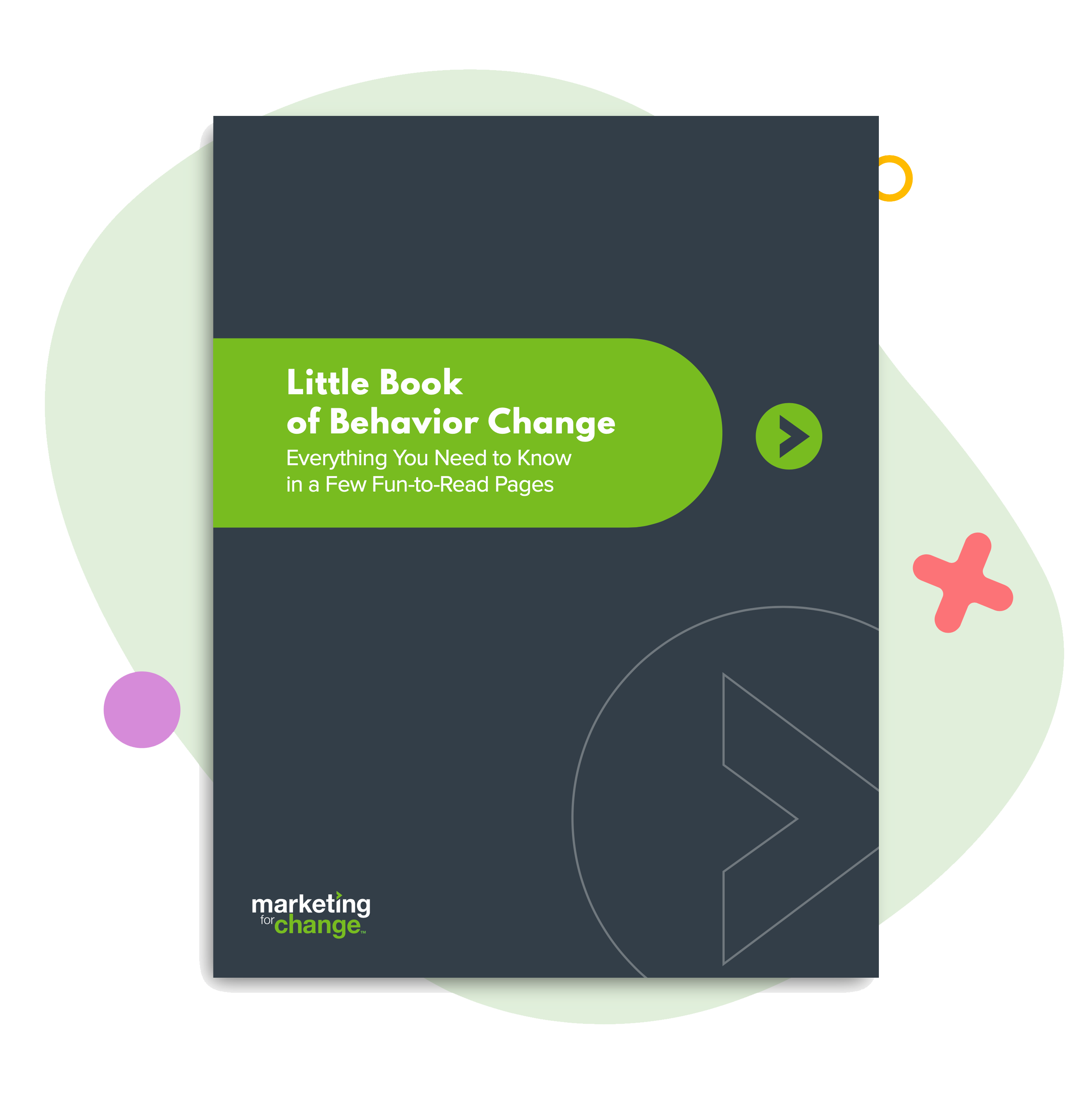
Making Star Performers Star Managers – A Behavior Change Exercise
It’s the classic management challenge: You have a star in your organization – an ambitious package of speedy brilliance who individually does what few others can. Do you make him or her a manager?
Like any business, we know this challenge well. But as a behavior-change agency doing culture change work, we approach it in our own way. For us, the solution lies in leveraging five common behavioral determinants — risk, rewards, efficacy, environment and self-standards.
The key to our analysis begins, as it always does, with the perspective of the target actor — the person we want to change. It begins with one of our core questions: What are they shopping for?
For a great individual performer, It may not be management work. To them, managing other people seems inefficient, unrewarding and not the best way to use their unique talent. They have a solid case: They could accomplish so much more if they spent less time babysitting the less talented and more time conquering the next challenge. Why not just invest more effort in hiring other stars like themselves? Why not let great performers simply… perform?
To someone rewarded so often for great individual work — stuff most others could not do as well or as fast — managing others is a huge risk. And why risk failure when you know so well how to succeed?
Here’s our answer to that question: Because it’s worth it in the long run. There’s a big reward, for the star and for the organization. If we set the right environment, the risk can be managed. More importantly, the star’s self-standard demands this issue be confronted — even if he or she doesn’t yet recognize it. And these are the ingredients to your create-a-great-manager behavior change effort.
But just saying that is insufficient. You need to get stars to think through the challenge and knowingly accept just how much change and investment it will require on their part. You need to build the case for change and then, stand back and let them make their own decision.
And that’s what this blog post is about — how you build the case for change.
Step 1: Creating a believer
If this employee is truly a star, he or she is probably pretty invested in the organization. Doing what’s right for the organization is part of his or her self-standard — it’s part of how they see themselves. So it makes sense to begin by making the case that this is good for the organization — not just because the boss say so, but because there is indisputable logic behind it.
You can root the case in math. Consider first what every organization seeks of entry-level employees. We want to hire new recruits who are 100% ready to do their job well. That’s the goal. But, of course, rarely is anyone completely ready on day one to succeed. They’re raw. They need training. They probably have bad habits. Most have no idea what real success even looks like. So, we are happy to take on those who are 75% or maybe 80% ready, then train and mentor them up to 100%. Let’s call this the 1X level — the point where employees are 100% ready to succeed. For professionals, maybe you get people here in six months.
Then, the good ones — and we try to hire those with this potential — they get even better, more efficient. These stars operate at an even higher level, maybe at 150% or 1.5X. If you’re lucky, eventually, a few superstars emerge — not everyone will reach this level, but a certain percentage may. These stars are so amazing they are twice as valuable as their peers — they are 2Xers. There may even be bigger outliers: the rare combination of drive, intelligence and talent that accomplishes through herculean effort, hustle and overtime more than we thought possible of a single person. This is the 2.2X or 2.3Xer. The remarkable superstar everyone loves and celebrates. The diamond in the coal pile.
But every day is only 24 hours long and every person must at some point sleep and recharge, so for this model we say no one person can individually be more than a 2.5Xer. There’s a ceiling on individual performance, and it’s called reality.
Only — if only — you had a whole organization of 2Xers and 2-plusXers, imagine what your organization could do. I doubt that’s possible, but it’s a great goal. Whatever the case, what creates success is moving employees first to the 1X level and then, as a standard, moving most of them beyond that.
Step 2: Turn managers and mentors into multipliers
That’s why truly great mentors and managers are so important. They take the 0.8Xers (80% ready to succeed) and grow them into 1Xers, a share of whom (if you’re hiring the right people) will grow into 1.5Xers (stars) and some of whom can be grown into 2Xers (superstars). The people who facilitate that growth are great managers. As leaders, we should all strive to do this, and great books like Multipliers and Mastering Leadership can help. But if you want to grow, this attitude has to seep through the whole organization. You need more Multipliers.
These managers – who grow 1Xers into 1.5Xers and 2Xers – we call 4Xers because they exceed the limits of individual performance by building star teams that, while perhaps not entirely comprised of superstars, can collectively make a bigger impact than even the rarest of extraordinary individual performers. Some of those exposed to these Multipliers may even grow to the superstar level themselves. (We also have a 3X level – this is an aspiring 2Xer, who has made the mental leap to begin growing into a 4Xer and adds extra value by being a Multiplier in certain situations).
Inspired 4Xers with extraordinary vision can even take it up one more level. There are 5Xers who create the platforms that make everyone add much more value than they could otherwise. These are the company founders and division leaders.

Having a lot of 1.5Xers and 2Xers is critical to providing superior value. But an organization that helps 2Xers become 4Xers will grow faster, ultimately make better use of its talent and attract better talent over time, especially if the organization’s 5Xer is engaged and growing herself. It’s the kind of place driven people want to work because driven people want to be challenged and grow.
Step 3: Determine if your star performer wants to be great, or make others great.
The catch is that it’s not easy transforming 2Xers into 4Xers because the skills and attitudes needed to become a great individual performer are not the same as those needed to become a leader and multiplier. In some ways, what makes you great individually — like a bias for taking ownership of a problem and solving it yourself — can make it harder to be a great leader. This is why the transition is sometimes most difficult for the most super of superstars — the 2.5Xers. Their individual work leaves colleagues in awe, and clients in love and bosses perpetually impressed. Mentoring others means giving a lot of that up because raising a 1Xer to a 2Xer means slowing down, trying the patience of you and others, and allowing for a risk of failure. Especially as the relationship begins, it’s difficult. The feeling of accomplishment — the high of exceeding expectations that is an almost daily occurrence for a superstar — is a long time coming when your main role is management. The process is lengthy and uncertain if it comes at all, it is also less visible to colleagues that you helped nurture that 1Xer into a 2Xer.
Which brings us back to the original question: Do we really want to interrupt the productive focus of superstars to put them on the bumpy, uncertain path to management?
Maybe. The answer, as it turns out, lies with the Stars themselves. The organization needs to make some things clear, like the benefits of making the move (for example, a successful 4Xer will always produce more revenue (and thus command a bigger salary) than an equally successful 2Xer). But no one should force the Star into management. It won’t work. There is a mindshift that can’t be underplayed here – the Star must want to change, to work differently and embrace new goals. It will mean setbacks and failures, and learning a lot of new tricks. Most importantly, the effort may ultimately fail. Not every star performer can be a star manager no matter how hard they try. So there is a big risk — the risk of failure.
On the other hand, Stars can transform into aspirational and visionary managers because of what is undoubtedly a solid technical foundation, a strong point of view about the work and an extraordinary work ethic. Yes, 1.5Xers can make solid managers, but 2Xers and 2-plusXers can become transformational leaders. They have more to multiply.
That in the end is the question organizations must make their star performers answer: What do you want more — to be great or to make others great? Then, we all need to live with their decision.

Peter is the founder & chief insights officer of Marketing for Change.








